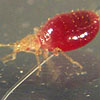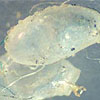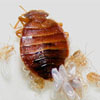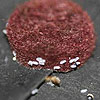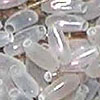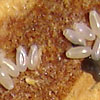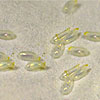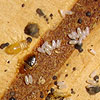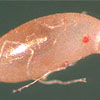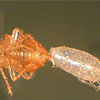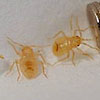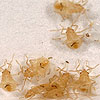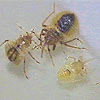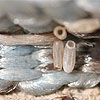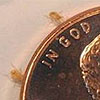Categories
- Bed Bug
- Bed Bug Cream
- BED BUG DATABASE
- Bed Bug Home Remedies
- Bed Bug Oil
- Bed Bug Remedies
- Bed Bug Spray
- Bed Bugs New York
- Bed Bugs Vancouver
- Bed Bugs World
- Bed Bugs American Samoa
- Bed Bugs Canada
- Bed Bugs Guam
- Bed Bugs North Mariana islands
- Bed Bugs Puerto Rico
- Bed Bugs United States
- Bed Bugs Alabama
- Bed Bugs Alaska
- Bed Bugs Arizona
- Bed Bugs Arkansas
- Bed Bugs California
- Bed Bugs Colorado
- Bed Bugs Connecticut
- Bed Bugs Delaware
- Bed Bugs Florida
- Bed Bugs Georgia
- Bed Bugs Hawaii
- Bed Bugs Idaho
- Bed Bugs Illinois
- Bed Bugs Indiana
- Bed Bugs Iowa
- Bed Bugs Kansas
- Bed Bugs Kentucky
- Bed Bugs Louisiana
- Bed Bugs Maine
- Bed Bugs Maryland
- Bed Bugs Massachusetts
- Bed Bugs Michigan
- Bed Bugs Minnesota
- Bed Bugs Mississippi
- Bed Bugs Missouri
- Bed Bugs Montana
- Bed Bugs Nebraska
- Bed Bugs Nevada
- Bed Bugs New Hampshire
- Bed Bugs New Jersey
- Bed Bugs New Mexico
- Bed Bugs New York
- Bed Bugs North Carolina
- Bed Bugs North Dakota
- Bed Bugs Ohio
- Bed Bugs Oklahoma
- Bed Bugs Oregon
- Bed Bugs Pennsylvania
- Bed Bugs Rhode Island
- Bed Bugs South Carolina
- Bed Bugs South Dakota
- Bed Bugs Tennessee
- Bed Bugs Texas
- Bed Bugs Utah
- Bed Bugs Vermont
- Bed Bugs Virgin Islands
- Bed Bugs Virginia
- Bed Bugs Washington
- Bed Bugs Washington DC
- Bed Bugs West Virginia
- Bed Bugs Wisconsin
- Bed Bugs Wyoming
- BedBug Removal
- BedBugs in Michigan
- Canada Bed Bugs
- Do it yourself Bed Bug
- Exterminator Bed Bugs
- Health
- Pest Inspection
- Toronto Bed Bugs
- Welcome to Bed Bugs
Registry Sites List
- Bronx Bed Bug Registry Infestation Maps, Residential And Hotel
- Brooklyn Bed Bug Registry Infestation Maps, Residential And Hotel
- Manhattan Bed Bug Registry Infestation Maps, Residential And Hotel
- Nyc Bed Bug Registry Infestation Maps, Residential And Hotel
- Queens Bed Bug Registry Infestation Maps, Residential And Hotel
- Staten Island Bed Bug Registry Infestation Maps, Residential And Hotel
Recommended Sites
Daily Archives: November 19, 2022
News Links:
Bed Bug Eggs and Nymphs
Bed Bug Eggs
 The transmission of bed bug eggs is also an issue. It is not uncommon for the live bedbugs amongst an infestation to be completely eradicated during an effective treatment cycle only to have the remaining or surviving eggs hatch and re infest the location. The bed bug eggs themselves are usually unaffected by and/or not killed by most approved pesticides. The eggs can also have an incubation period of up to several weeks and may be deposited in hidden areas that are difficult to penetrate, difficult to find, or simply hidden away from what otherwise would have been a quick lethal treatment (i.e. lethal treatment such as the killing of a bed bug's eggs through heat'”by hot ironing fabric surfaces where bed bugs have hidden, through steaming [typically using a fabric steamer], via direct machine drying, or through a procedural use of boiling water, etc.).
The transmission of bed bug eggs is also an issue. It is not uncommon for the live bedbugs amongst an infestation to be completely eradicated during an effective treatment cycle only to have the remaining or surviving eggs hatch and re infest the location. The bed bug eggs themselves are usually unaffected by and/or not killed by most approved pesticides. The eggs can also have an incubation period of up to several weeks and may be deposited in hidden areas that are difficult to penetrate, difficult to find, or simply hidden away from what otherwise would have been a quick lethal treatment (i.e. lethal treatment such as the killing of a bed bug's eggs through heat'”by hot ironing fabric surfaces where bed bugs have hidden, through steaming [typically using a fabric steamer], via direct machine drying, or through a procedural use of boiling water, etc.).
 This stubborn tendency of bed bug infestations towards re-emergence can be incredibly problematic and made all the more difficult to detect due to a now smaller size of the newly re-emerged bed bug nymphs. Re infestation can also be made more difficult to discover early enough due to a corresponding decrease in the 'size' of infestation symptoms'”such as fewer and now much smaller fecal droppings that may be scattered in between and more difficult to detect (droppings that may then be found resembling lone, tiny pinhead-sized dabs from a black permanent-marker). As well as other 'smaller' infestation symptoms such newer sloughed off skins that tinier in size and the potential for hiding locations that are more narrow and thus harder to find during re infestation, etc. The result of a recurrent bed bug infestation can prove dispiriting, disheartening, demoralizing, and even depressing to households that may have already gone great lengths (in expense, labor, treatment, containment measures, lost furniture, etc.) to try and contain an infestation. Fortunately, more effective (as well as cost-effective) approaches towards successful treatment can come with experience.
This stubborn tendency of bed bug infestations towards re-emergence can be incredibly problematic and made all the more difficult to detect due to a now smaller size of the newly re-emerged bed bug nymphs. Re infestation can also be made more difficult to discover early enough due to a corresponding decrease in the 'size' of infestation symptoms'”such as fewer and now much smaller fecal droppings that may be scattered in between and more difficult to detect (droppings that may then be found resembling lone, tiny pinhead-sized dabs from a black permanent-marker). As well as other 'smaller' infestation symptoms such newer sloughed off skins that tinier in size and the potential for hiding locations that are more narrow and thus harder to find during re infestation, etc. The result of a recurrent bed bug infestation can prove dispiriting, disheartening, demoralizing, and even depressing to households that may have already gone great lengths (in expense, labor, treatment, containment measures, lost furniture, etc.) to try and contain an infestation. Fortunately, more effective (as well as cost-effective) approaches towards successful treatment can come with experience.
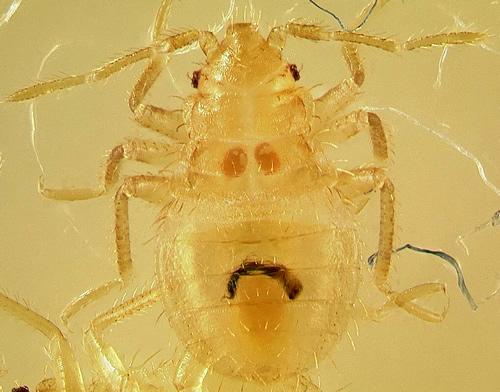 General machine washing and drying on high heat will disinfect most clothing of potential bed bugs and will kill their eggs as well. In the 18th century,turpentinewas used in combination withhenna(Lawsonia inermis, aka camphire) flowers and alcohol, as an insecticide that also reputedly killed bed bug eggs. The use of a fabric steamer on the infestations will kill the eggs and the bugs instantly. The bed bugs cannot handle the intense heat and are killed in a couple of seconds. Since steam will penetrate the pores of a mattress, it can reach deep into the corners of beds.
General machine washing and drying on high heat will disinfect most clothing of potential bed bugs and will kill their eggs as well. In the 18th century,turpentinewas used in combination withhenna(Lawsonia inermis, aka camphire) flowers and alcohol, as an insecticide that also reputedly killed bed bug eggs. The use of a fabric steamer on the infestations will kill the eggs and the bugs instantly. The bed bugs cannot handle the intense heat and are killed in a couple of seconds. Since steam will penetrate the pores of a mattress, it can reach deep into the corners of beds.
Adult bed bugs, the nymphs, or their eggs may also follow home movers into their new homesite infesting the new location as well'”often following movers who were, in fact, moving out due to an unmanaged infestation.
An immature bed bug may take several months to mature to an adult and an adult bed bug can live for up to one year. During development, the young bed bug will feed frequently on the blood of humans, and can exist for many months between blood meals. Bed bugs inject saliva into the blood stream of their host to thin the blood, and to prevent coagulation. It is this saliva that causes the intense itching and welts. The delay in the onset of itching gives the feeding bed bug time to escape into cracks and crevices. In some cases, the itchy bites can develop into painful welts that last sever
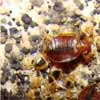 Yet another perceived cause of the bed bug resurgence is the growing push to recycle mattresses. Not only are mattresses to be recycled, collected, and stored with those already processed, but it is very difficult to ensure that no bed bugs or eggs survive the processing. In the 18th century,turpentinewas used in combination withhenna(Lawsonia inermis, aka camphire) flowers and alcohol, as an insecticide that also reputedly killed bed bug eggs. Use of steam or by sprayingrubbing alcoholon any visible insects is done to effectively rid bed frames of adult bed bugs and eggs, although it does not serve as a permanent treatment.
Yet another perceived cause of the bed bug resurgence is the growing push to recycle mattresses. Not only are mattresses to be recycled, collected, and stored with those already processed, but it is very difficult to ensure that no bed bugs or eggs survive the processing. In the 18th century,turpentinewas used in combination withhenna(Lawsonia inermis, aka camphire) flowers and alcohol, as an insecticide that also reputedly killed bed bug eggs. Use of steam or by sprayingrubbing alcoholon any visible insects is done to effectively rid bed frames of adult bed bugs and eggs, although it does not serve as a permanent treatment.
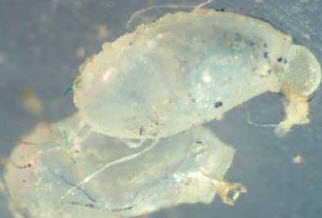 Bedbugs show strong resistance to dessication, able to survive low humidity and a 35'“40°C range even with loss of one-third of body weight; earlier life stages are more susceptible to drying out than later ones.The thermal death point for the common bedbug (C. lectularius) is high: 45°C (113°F), and all stages of life are killed by 7 minutes of exposure to 46°C (115°F). However, in heating buildings, to ensure that no bedbugs survive in cooler locations, theUS Department of Defense recommends using a temperature of at least 49°C (120°F), at 20-30% relative humidity, for at least 20 minutes.
Bedbugs show strong resistance to dessication, able to survive low humidity and a 35'“40°C range even with loss of one-third of body weight; earlier life stages are more susceptible to drying out than later ones.The thermal death point for the common bedbug (C. lectularius) is high: 45°C (113°F), and all stages of life are killed by 7 minutes of exposure to 46°C (115°F). However, in heating buildings, to ensure that no bedbugs survive in cooler locations, theUS Department of Defense recommends using a temperature of at least 49°C (120°F), at 20-30% relative humidity, for at least 20 minutes.
The use of a fabric steamer on the infestations will kill the eggs and the bugs instantly.[citation needed]Since steam will penetrate the pores of a mattress, it can reach deep into the corners of beds.[citation needed]Individual items can be treated with heat. Oven-like devices have been designed specifically for this purpose and are available on the market.[citation needed]Clothing can be sanitized by a 120°F (49°C) laundry dryer.
Enclosing a mattress in a black plastic bag and placing it in the sun on a hot day is not considered effective, because temperatures won't necessarily be high enough everywhere.
 Bed bugs are parasites that feed on the blood of people and certain animals, and they require these blood meals to grow and reproduce. They live close to areas where people typically sleep, rest, or sit for long periods. Hungry bugs will move out from their hiding places, in search of exposed skin. You may also find cast skins, which are empty shells of bugs as they grow from one stage to the next. After a blood meal, bed bugs deposit fecal spots (composed of digested blood) in areas adjacent to the feeding site or back at their hiding places.
Bed bugs are parasites that feed on the blood of people and certain animals, and they require these blood meals to grow and reproduce. They live close to areas where people typically sleep, rest, or sit for long periods. Hungry bugs will move out from their hiding places, in search of exposed skin. You may also find cast skins, which are empty shells of bugs as they grow from one stage to the next. After a blood meal, bed bugs deposit fecal spots (composed of digested blood) in areas adjacent to the feeding site or back at their hiding places.
Getting rid of bed bugs has been a problem documented as early as medieval times in Europe or during the time of Aristotle in Greece. Often attacking when one is fast asleep, bed bugs are smart creatures that choose to move when the target least knows it. Every person will have his own version of a bed bug. The bed bugs will die if they come into contact with the chemicals, but considering their size, it is likely that a few will survive. If one of the survivors is a female -- able to produce hundreds of eggs in here lifespan -- then a newborn tribe of pests will be sucking blood from their sleeping victims in at least one day following conception
Posted in BED BUG DATABASE
Comments Off on Bed Bug Eggs and Nymphs

 Residence
Residence  Location
Location 
